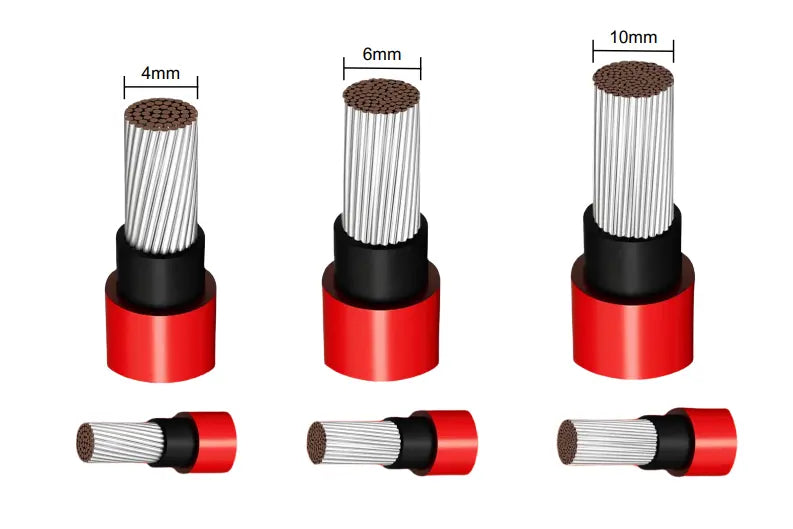Voltage drop is a critical consideration in solar energy systems, impacting system performance, efficiency, and safety. In this comprehensive guide, we'll delve deep into the concept of voltage drop, explore its causes and effects, discuss methods to mitigate voltage drop, and highlight its significance in solar installations.
What is Voltage Drop?
Voltage drop refers to the reduction in voltage along the length of a conductor, such as wires or cables, due to resistance. It occurs as electrical current encounters resistance within the conductor, leading to a drop in voltage between the source and the load.
Causes of Voltage Drop in Solar Systems
Several factors contribute to voltage drop in solar energy systems:
-
Wire Resistance: The resistance of the wires used in the system is a primary factor influencing voltage drop. Longer wires or those with smaller cross-sectional areas have higher resistance, leading to greater voltage drop.
-
Connector Resistance: Poorly installed or corroded connectors can increase resistance, contributing to voltage drop.
-
Temperature: High temperatures can increase the resistance of conductors, leading to higher voltage drop.
-
Current Load: Higher current loads result in greater voltage drop, particularly in systems with long wire runs.
Effects of Voltage Drop
Voltage drop can have several adverse effects on solar energy systems:
-
Reduced Efficiency: Voltage drop decreases the efficiency of the system, leading to lower power output and reduced energy harvest from solar panels.
-
Equipment Damage: Excessive voltage drop can cause damage to sensitive electronic components, such as inverters and charge controllers, reducing their lifespan and reliability.
-
Safety Hazards: Voltage drop can create safety hazards, such as overheating of wires and connectors, posing fire risks.
Mitigating Voltage Drop
Several measures can be taken to mitigate voltage drop in solar energy systems:
-
Proper Wire Sizing: Choosing wires with adequate gauge size based on the current load and distance to minimize resistance and voltage drop.
-
Reducing Wire Length: Minimizing the length of wire runs between components can decrease voltage drop.
-
Using High-Quality Connectors: Employing high-quality connectors and ensuring proper installation to minimize resistance and voltage drop.
-
Temperature Management: Implementing measures to control temperatures, such as using heat-resistant wires and providing adequate ventilation, can reduce voltage drop.
Voltage Drop Calculation
Voltage drop can be calculated using Ohm's Law, which states that voltage (V) equals current (I) multiplied by resistance (R). The formula for voltage drop (Vd) is:
Vd = I * R
Where:
- Vd is the voltage drop (in volts)
- I is the current (in amps)
- R is the resistance (in ohms)
To calculate voltage drop, you'll need to determine the resistance of the conductor (such as a wire) and the current flowing through it. The resistance of the conductor can be calculated using the formula:
R = (ρ * L) / A
Where:
- R is the resistance (in ohms)
- ρ (rho) is the resistivity of the material (in ohm-cmil/ft or ohm-m)
- L is the length of the conductor (in feet or meters)
- A is the cross-sectional area of the conductor (in circular mils or square meters)
Once you have the resistance and current values, you can use the formula Vd = I * R to calculate the voltage drop across the conductor.
It's important to note that voltage drop calculations may vary depending on factors such as conductor material, temperature, and installation conditions. Additionally, voltage drop calculations should comply with relevant electrical codes and standards to ensure safety and performance.
Significance of Voltage Drop in Solar Installations
Voltage drop is a crucial consideration in solar installations due to its direct impact on system performance, efficiency, and safety. Proper understanding and management of voltage drop are essential for optimizing the performance and longevity of solar energy systems.
Conclusion
In conclusion, voltage drop is a significant factor to consider in solar energy systems, affecting performance, efficiency, and safety. By understanding the causes and effects of voltage drop and implementing appropriate mitigation measures, solar professionals can ensure optimal system performance and reliability. As the demand for solar energy continues to grow, addressing voltage drop becomes increasingly important in designing and installing efficient solar systems.






